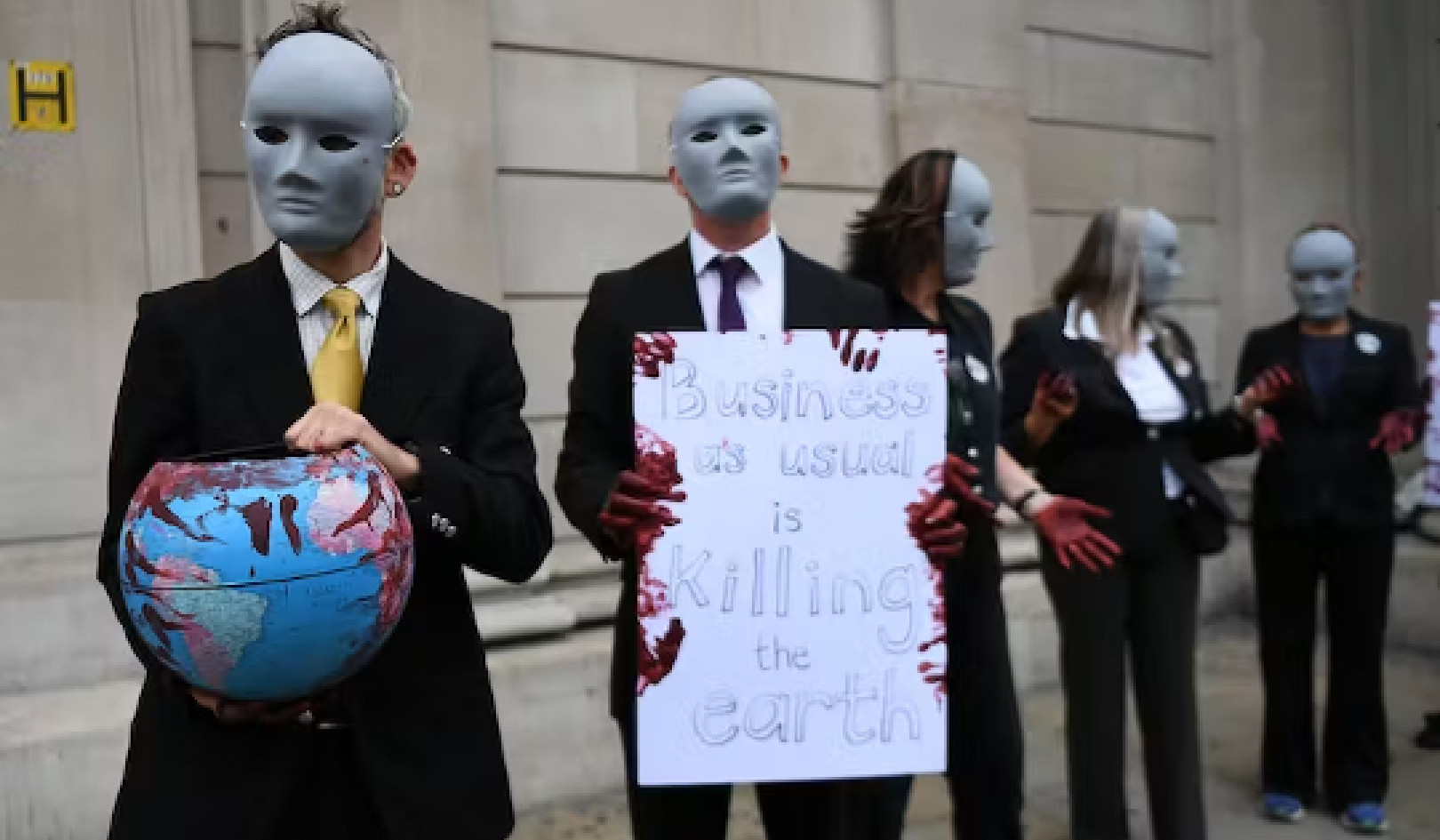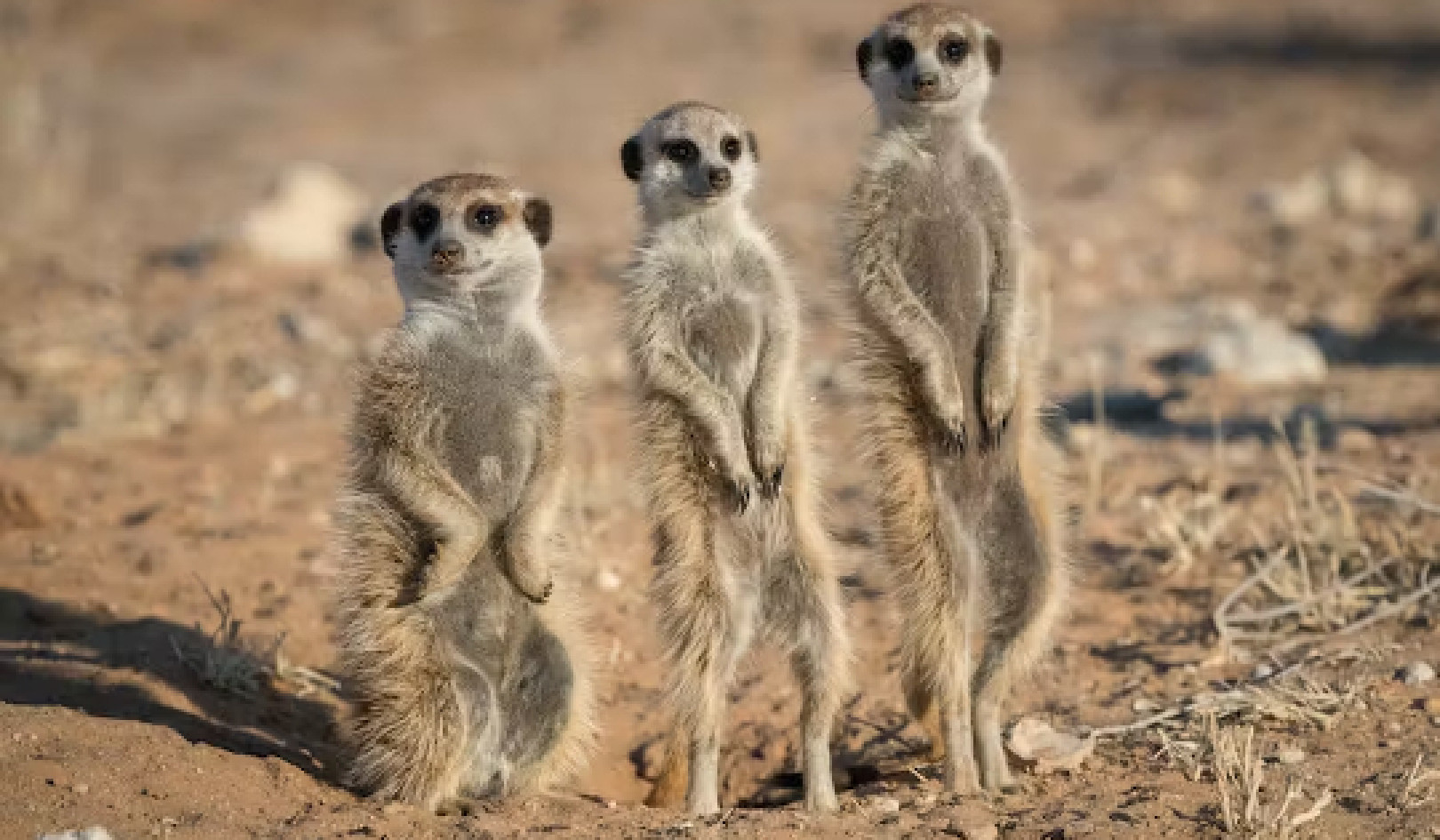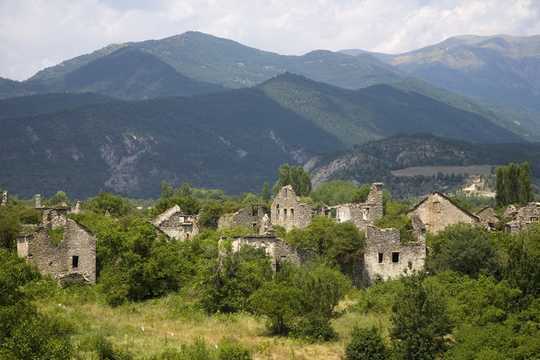
An abandoned village in the Huesca Pyrenees has undergone ‘passive rewilding’. Joseph Sohm / Shutterstock
Rewilding is often thought of as a fantastical vision of the future. One day we might share the landscape with wolves and bears, but in the present day, it seems unlikely. For many people in Europe though, that’s exactly what they’ve been doing for at least the past decade.
Rewilding means bringing back the species and habitats which have disappeared from a region. Initially, conservationists imagined creating vast nature reserves which could be connected by “wildlife corridors” of forest, so that carnivores such as lynx could be reintroduced and thrive in a landscape that’s been heavily altered by humans.
But that idea is changing. The current emphasis goes beyond just restoring habitats for reintroduced species and considers ecosystems as a whole, and how they can be helped to recover. Better yet, much of this involves little human effort and could have positive consequences for society and ecosystems.

The difference between the restored (yellow pyramid) and the degraded ecosystem (orange pyramid) indicates the effects of rewilding on an ecosystem. Rewilding can help shift social expectations (dashed lines) toward the ecological potential (orange arrows). Perino et al. 2019. Author provided
From agricultural land to forest
The cheapest and most effective way to rewild a landscape is to eliminate or reduce as much as possible the causes that have contributed to degrade it. For the last 12,000 years in Europe, these causes have largely involved agriculture and grazing livestock which have destroyed natural vegetation, especially forests, grasslands and wetlands, and replaced them with cropland and pastures.
But as people have migrated from rural areas to cities, large areas of farmland – especially isolated patches in remote areas – have returned to nature. This has been happening in Europe since the second half of the 20th century.
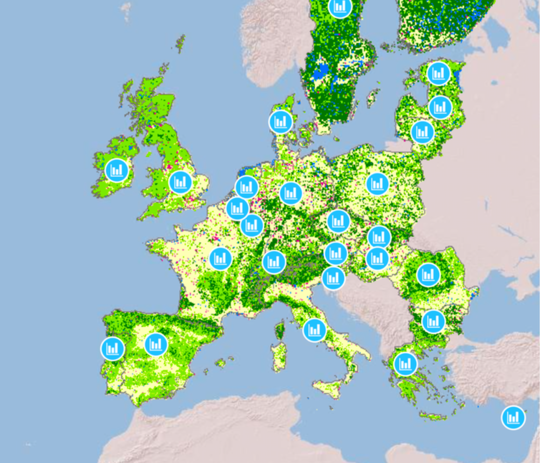
Land cover of Europe in 1900. Department of Geoinformation Science and Remote Sensing, Wageningen University, Netherlands. 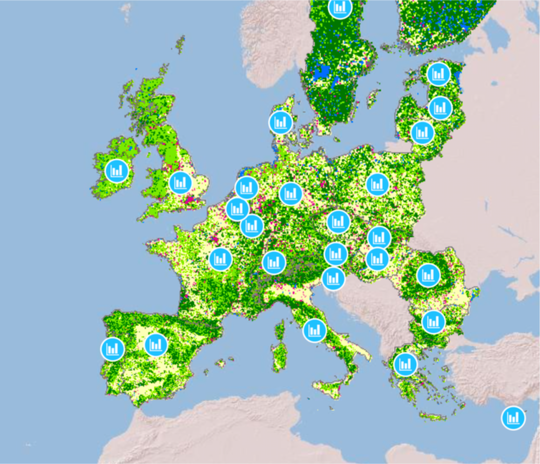
Land cover of Europe in 2010. Department of Geoinformation Science and Remote Sensing, Wageningen University, Netherlands.
As crops and pastures are abandoned, shrubland and forests naturally regenerate. Despite 40% of the world’s land being cultivated or grazed permanently by domestic herbivores, there has been a big increase in the area occupied by forests in recent decades, explained mainly by these habitats naturally regenerating as humans have left.
Forests returned at a rate of 2.2m hectares per year between 2010-2015 alone. Spain, for example, has tripled its forest area since 1900 – increasing from 8% to 25% of its territory. The country gained 96,000 hectares of forest every year from 2000-2015.
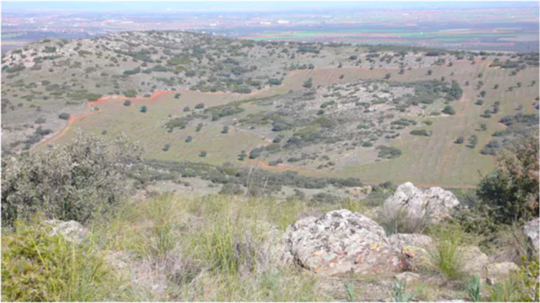
Natural regeneration of Mediterranean woodland in La Mancha, central Spain, due to the abandonment of fields and extensive farming. Author provided
All this new habitat has been recolonised by wildlife. Populations of large carnivores such as the brown bear, the wolf, the Eurasian lynx and the wolverine have all increased in Europe. Populations of large and medium-sized herbivores, such as the red deer, the wild boar, the roe deer and the Iberian ibex, have also increased. Other species, such as the Iberian lynx and the European bison, have been reintroduced on purpose.
Restore as much as possible
The same strategies cannot be generalised everywhere, nor should the aim always be to recover pristine ecosystems, which is often simply impossible in today’s world.
The goal in most cases should be to improve the ecological condition of landscapes as much as possible and ensure they can serve multiple functions for people and wildlife. Ecological restoration should be flexible and pragmatic without losing awareness of what the natural ecosystem originally looked like, so as to regain the highest possible levels of biodiversity.
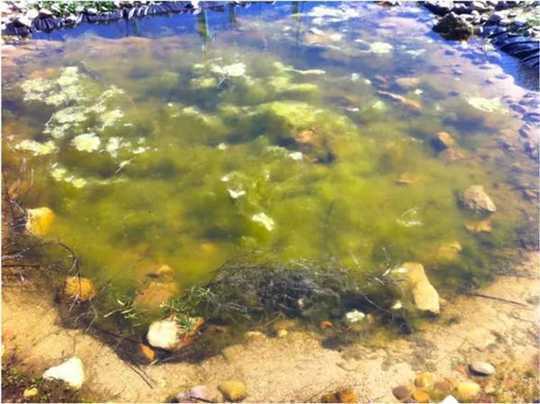
Small pond created in an olive grove in Noves in Toledo, Spain. The pond has been colonised by multiple aquatic species. Author provided
In Europe, around 30% of the land is cultivated for crops and another 15% is covered by pastures or heath and moorland. Around 10% of the territory is made up of towns, cities and roads. More wilderness could be encouraged in all these environments, which could allow agriculture and livestock production or residential areas and industry to coexist with higher levels of biodiversity.
Large parts of Europe have been passively rewilding for decades as people have moved out of rural areas. Reintroducing species more widely can only be done with the approval of the different people likely to be affected. Due to the low densities of people in the remote fringes of Europe’s rural areas, they remain the best options for places to reintroduce wild herbivores and carnivores which would restore natural processes thanks to their key role in food webs.![]()
About the Author
José M. Rey Benayas, Catedrático de Ecología, Universidad de Alcalá
This article is republished from The Conversation under a Creative Commons license. Read the original article.
Books on The Environment from Amazon's Best Sellers list
"Silent Spring"
by Rachel Carson
This classic book is a landmark in the history of environmentalism, drawing attention to the harmful effects of pesticides and their impact on the natural world. Carson's work helped to inspire the modern environmental movement and remains relevant today, as we continue to grapple with the challenges of environmental health.
Click for more info or to order
"The Uninhabitable Earth: Life After Warming"
by David Wallace-Wells
In this book, David Wallace-Wells offers a stark warning about the devastating effects of climate change and the urgent need to address this global crisis. The book draws on scientific research and real-world examples to provide a sobering look at the future we face if we fail to take action.
Click for more info or to order
"The Hidden Life of Trees: What They Feel, How They Communicate?Discoveries from A Secret World"
by Peter Wohlleben
In this book, Peter Wohlleben explores the fascinating world of trees and their role in the ecosystem. The book draws on scientific research and Wohlleben's own experiences as a forester to offer insights into the complex ways that trees interact with one another and the natural world.
Click for more info or to order
"Our House Is on Fire: Scenes of a Family and a Planet in Crisis"
by Greta Thunberg, Svante Thunberg, and Malena Ernman
In this book, climate activist Greta Thunberg and her family offer a personal account of their journey to raise awareness about the urgent need to address climate change. The book provides a powerful and moving account of the challenges we face and the need for action.
Click for more info or to order
"The Sixth Extinction: An Unnatural History"
by Elizabeth Kolbert
In this book, Elizabeth Kolbert explores the ongoing mass extinction of species caused by human activity, drawing on scientific research and real-world examples to provide a sobering look at the impact of human activity on the natural world. The book offers a compelling call to action to protect the diversity of life on Earth.





















